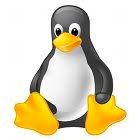From: torvalds@klaava.Helsinki.FI (Linus Benedict Torvalds)
Newsgroups: comp.os.minix
Subject: What would you like to see most in minix?
Summary: small poll for my new operating system
Message-ID: <1991Aug25.205708.9541@klaava.Helsinki.FI>
Date: 25 Aug 91 20:57:08 GMT
Organization: University of Helsinki
Hello everybody out there using minix –
I’m doing a (free) operating system (just a hobby, won’t be big and
professional like gnu) for 386(486) AT clones. This has been brewing
since april, and is starting to get ready.I’d like any feedback on
things people like/dislike in minix, as my OS resembles it somewhat
(same physical layout of the file-system(due to practical reasons)
among other things). I’ve currently ported bash(1.08) and gcc(1.40),and
things seem to work.This implies that I’ll get something practical within a
few months, andI’d like to know what features most people would want. Any
suggestions are welcome, but I won’t promise I’ll implement them :-)
Linus (torvalds@kruuna.helsinki.fi)
PS. Yes – it’s free of any minix code, and it has a multi-threaded fs.
It is NOT protable (uses 386 task switching etc), and it probably never
will support anything other than AT-harddisks, as that’s
all I have :-(.
Etiqueta: linus
Cómo instalar Guest Additions en Linux Mint Debian Rolling
He de confesar que no me gusta Unity, ni NotifyOSD sin botón para cerrar, ni tampoco los botones de control de ventana a la izquierda. No me gusta el Ubuntu like OSX. Así que considerando un posible cambio en el futuro de distribución me he puesto a probar Linux Mint Debian Rolling Release en una máquina virtual en VirtualBox 4.0. Lo que es una Rolling Release lo explican bien en la wikipedia, aunque resumiendo es una distribución donde el avance no lo hace por número de versión, si no que va actualizando los paquetes/programas progresivamente.
Instalarlo en la máquina virtual es fácil, como cualquier otro sistema. Instalar las Guest Additions, necesarias para tener un buen rendimiento gráfico de la máquina virtual, necesita seguir estos pasos. Montamos la iso de las Guest Additions pulsando HOST + D, o desde Dispositivos Instalar Guest Additions. Abrimos una terminal y ejecutamos:
|
0 1 2 3 4 5 |
su - aptitude install gcc linux-headers-$(uname -r) make cd /media/cdrom sh VBoxLinuxAdditions.run |
